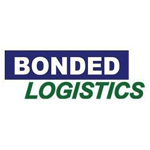5 Common Mistakes in Ending Inventory Calculations to Avoid
Avoid These 5 Common Mistakes in Ending Inventory Calculations
Ending inventory calculations are a cornerstone of accurate financial reporting and efficient inventory management in the logistics and supply chain sectors. Missteps in these calculations can lead to significant financial discrepancies, affecting everything from tax obligations to business valuations. This blog post delves into five prevalent mistakes in ending inventory calculations and offers strategies to avoid them, ensuring precision in your inventory assessments.
Misunderstanding Ending Inventory Formulas
The foundation of accurate inventory management lies in understanding the basic ending inventory formula:
Ending Inventory = Beginning Inventory + Purchases – Cost of Goods Sold (COGS).
Despite its simplicity, many professionals misapply this formula, leading to inaccurate financial reports. A common misconception is neglecting to account for all purchases or incorrectly calculating COGS, which can skew the ending inventory figures.
Accuracy in applying this formula is crucial for financial reporting. Errors can lead to misstated financial statements, affecting business decisions and stakeholder trust. For instance, overestimating ending inventory inflates net income, while underestimating it does the opposite. Therefore, a meticulous approach to applying the formula is essential, ensuring all components are accurately accounted for.
Choosing the Wrong Inventory Valuation Method
Choosing the appropriate inventory valuation method is pivotal in reflecting the true financial state of a business. The three primary methods—FIFO (First-In, First-Out), LIFO (Last-In, First-Out), and Weighted Average—each have distinct applications and implications.
- FIFO is ideal for perishable goods, as it assumes older inventory is sold first, aligning with the actual flow of goods.
- LIFO can be beneficial for businesses in inflationary environments, as it matches recent costs with current revenues, potentially lowering taxable income.
- Weighted Average smooths out price fluctuations by averaging the cost of goods available for sale.
Selecting the wrong method can significantly impact financial outcomes and tax obligations. For example, using LIFO in a deflationary period may lead to higher tax liabilities. Therefore, it’s crucial to evaluate your business context and inventory characteristics when choosing a valuation method.
Errors in Physical Inventory Counts
Physical inventory counts are integral to determining accurate ending inventory. However, errors during these counts are common and can arise from several factors, such as human error, inadequate training, or poor counting procedures. These mistakes can lead to discrepancies between recorded and actual inventory levels, affecting financial statements and operational decisions.
To improve accuracy, adopt best practices such as regular training for staff involved in counts, using technology like barcode scanners to reduce manual errors, and conducting counts during off-peak hours to minimize disruptions. Implementing cycle counting, where a portion of inventory is counted regularly, can also help maintain accuracy without the need for full-scale counts.
Neglecting to Adjust for Inventory Write-offs and Obsolescence
Inventory write-offs and obsolescence adjustments are critical yet often overlooked aspects of ending inventory calculations. Write-offs occur when inventory is deemed unsellable, while obsolescence refers to inventory that has lost value due to changes in market demand or product updates.
Failing to adjust for these factors can result in overstated inventory values, misleading financial reports, and poor business decisions. To manage obsolescence effectively, regularly review inventory for slow-moving or outdated items and adjust records accordingly. Implementing a robust inventory management system that flags potential obsolescence can also help maintain accurate inventory levels.
Inadequate Use of Technology in Inventory Tracking and Management
In today’s digital age, leveraging technology in inventory management is not just beneficial but essential. Advanced software solutions offer real-time tracking, automated calculations, and integration with other business systems, significantly reducing human error in inventory calculations.
For instance, implementing a Warehouse Management System (WMS) can streamline inventory processes by providing a centralized platform for tracking inventory levels, sales, and deliveries. Case studies have shown that businesses adopting such technologies report improved accuracy and efficiency in inventory management.
However, technology alone cannot eliminate errors. It’s crucial to have trained professionals overseeing these systems to ensure data integrity and address any discrepancies promptly. Regular audits and system updates are also necessary to maintain optimal performance.
Conclusion
This post has outlined five critical mistakes to avoid in ending inventory calculations. By understanding and addressing these common errors, warehouse managers and supply chain professionals can enhance the accuracy of their inventory reports and make more informed decisions. Precision in inventory management not only supports better operational efficiency but also contributes to overall financial health. As you refine your inventory practices, consider integrating technology and adopting best practices to ensure accuracy and reliability in your calculations.
Frequently Asked Questions (FAQ)
Q1: What is the most accurate method for calculating ending inventory?
A1: The accuracy of an ending inventory method can depend on the nature of the business and the specific inventory involved. Generally, FIFO (First-In, First-Out) is considered accurate for businesses where inventory items are perishable. It aligns with the natural flow of goods and often reflects the actual cost of goods sold more accurately.
Q2: How often should physical inventory counts be conducted?
A2: The frequency of physical inventory counts can vary by industry, but it is generally recommended to perform them at least once a year to ensure financial accuracy and compliance. Some businesses may benefit from more frequent counts, such as quarterly or monthly, especially if they deal with high-value or fast-moving inventory.
Q3: Can technology completely eliminate errors in ending inventory calculations?
A3: While technology significantly reduces the likelihood of errors, it cannot completely eliminate them. It is crucial to have trained professionals who can oversee and verify automated processes. Human oversight ensures that any anomalies are quickly identified and addressed, maintaining the integrity of inventory data.
Q4: What are some common tools used for ending inventory calculations?
A4: Common tools include inventory management software, spreadsheets like Microsoft Excel, and specialized accounting software that can integrate with other business systems for real-time data syncing. These tools help streamline processes, reduce manual errors, and provide valuable insights into inventory trends.
Q5: How does the choice of inventory valuation method impact financial reporting?
A5: The choice of inventory valuation method affects the cost of goods sold and ending inventory balance on the balance sheet, which in turn influences profit margins, tax obligations, and business valuation. For example, using LIFO during inflationary periods can lower taxable income, while FIFO might result in higher profits but increased tax liabilities.












